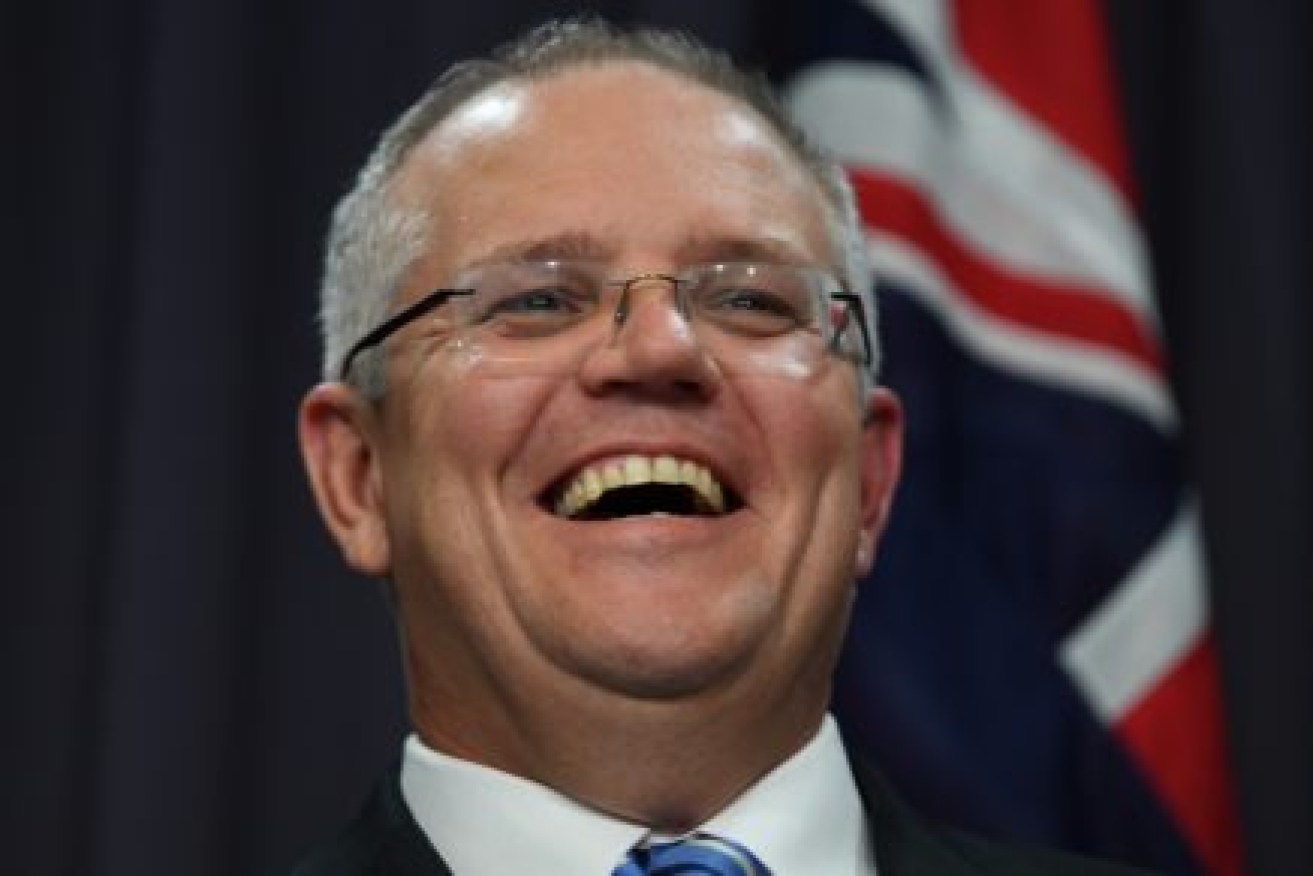GDP rises more than expected in December quarter to avoid recession

Treasurer Scott Morrison refused to be drawn on plans to balance the federal budget. Photo: AAP
Australia’s economy grew a strong 1.1 per cent in the fourth quarter, averting a technical recession after the September quarter contraction.
The strong December quarter helped lift Australia’s annual economic growth back up to a respectable, but still below average, 2.4 per cent.
The quarterly growth figure was even stronger than already rosy market expectations.
Many less optimistic economists raised their expectations for GDP yesterday afternoon, after a raft of economic data from the December quarter indicated growth may be stronger than the 0.7 per cent that the typical forecaster had previously been predicting.
Westpac was a case in point, raising its quarterly forecast from 0.4 per cent to 0.9 per cent.
The Bureau of Statistics said rising household spending (0.5 percentage points) and public investment in things such as infrastructure (0.3 percentage points) were the two biggest contributors to the nation’s growth at the end of last year.
However, the 1.2 per cent surge in household spending may prove to be an unsustainable component of growth, being driven mostly by a steep fall in the savings ratio from 6.3 to 5.2 per cent.
Household disposable incomes rose a mere 0.2 per cent, explaining why people were dipping into their nest eggs to fund consumption.
The weakness in household incomes, in turn, was driven by a fall in the “compensation of employees”, or pay packets, for the first time since the September quarter of 2012. Workers’ pay was down 0.5 per cent in the quarter.
This is because wages growth is the weakest on records back to the late-1990s, while underemployment remains prevalent with a trend towards part-time work.
There was no such problem for corporate profits, however, which are at record levels.
Those profits were boosted by a surge in commodity prices, which also raised Australia’s terms of trade by a massive 9.1 per cent over the quarter.
The terms of trade measure the prices Australia gets for its exports versus what it pays for imports.
This in turn has lifted “nominal GDP” which, unlike the headline “real GDP” figure, includes the change in prices not just the volume of output.
Nominal GDP surged 3 per cent during the quarter, which led to a 2.9 per cent jump in “real net national disposable income”, and a large 6.8 per cent increase over the year.
The ABS describes real net national disposable income per capita as the best measure of changing living standards in the National Accounts data, and it jumped 2.5 per cent in the fourth quarter.
It has been increasing for the past year, after Australia had been in an “income recession”, where this measure had fallen for six of the previous seven quarters before that.
– ABC








